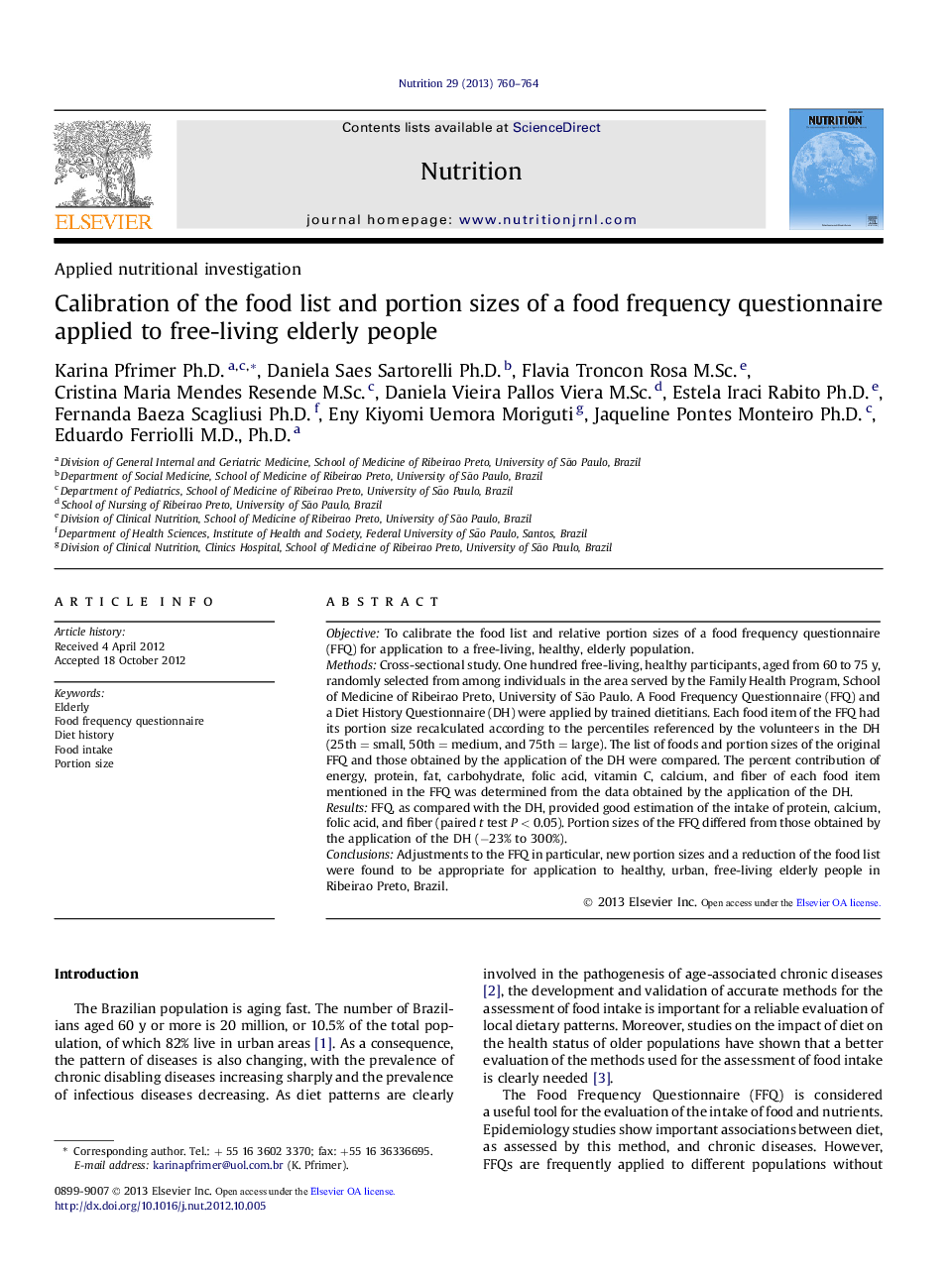| Article ID | Journal | Published Year | Pages | File Type |
|---|---|---|---|---|
| 6090194 | Nutrition | 2013 | 5 Pages |
ObjectiveTo calibrate the food list and relative portion sizes of a food frequency questionnaire (FFQ) for application to a free-living, healthy, elderly population.MethodsCross-sectional study. One hundred free-living, healthy participants, aged from 60 to 75 y, randomly selected from among individuals in the area served by the Family Health Program, School of Medicine of Ribeirao Preto, University of São Paulo. A Food Frequency Questionnaire (FFQ) and a Diet History Questionnaire (DH) were applied by trained dietitians. Each food item of the FFQ had its portion size recalculated according to the percentiles referenced by the volunteers in the DH (25th = small, 50th = medium, and 75th = large). The list of foods and portion sizes of the original FFQ and those obtained by the application of the DH were compared. The percent contribution of energy, protein, fat, carbohydrate, folic acid, vitamin C, calcium, and fiber of each food item mentioned in the FFQ was determined from the data obtained by the application of the DH.ResultsFFQ, as compared with the DH, provided good estimation of the intake of protein, calcium, folic acid, and fiber (paired t test P < 0.05). Portion sizes of the FFQ differed from those obtained by the application of the DH (â23% to 300%).ConclusionsAdjustments to the FFQ in particular, new portion sizes and a reduction of the food list were found to be appropriate for application to healthy, urban, free-living elderly people in Ribeirao Preto, Brazil.
